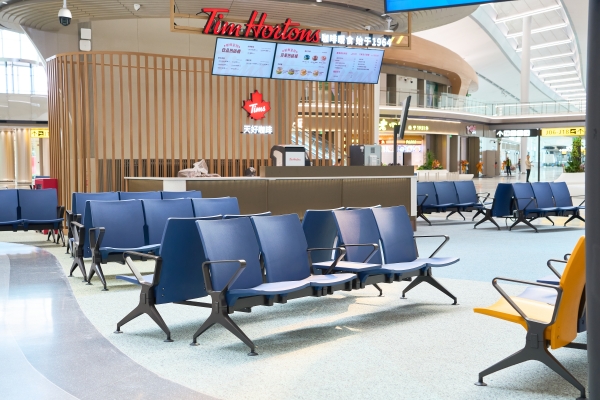In the construction and renovation of modern airports, airport waiting chairs are no longer simply functional facilities for passengers to rest temporarily. They have gradually evolved into an integral part of the overall airport experience and a powerful tool for enhancing an airport's commercial value. Excellent waiting chair design not only optimizes the passenger waiting experience but also generates substantial direct and indirect benefits for the airport through multi-dimensional strategies.
1. Traffic Monetization: From "Waiting" to "Reaching Out."
Airports experience tens of thousands or even hundreds of thousands of passengers daily, and airport waiting chairs are among the areas where passengers spend the most time. Traditional seats only meet basic functions, while intelligent, scenario-based designs can directly reach users:
Digital Interactive Screens: Advertisements or QR codes embedded in seat armrests promote duty-free shop discounts, VIP lounge services, and local travel packages, with revenue generated based on clicks or conversions.
Wireless Charging + Membership Portal: Free charging services are available, but passengers must scan a QR code to follow the brand's official account or register as a member, thereby generating private traffic for merchants.
Dynamic Zoning: Seat color or logos (such as "Business Zone" and "Family Zone") guide passengers to surrounding commercial areas, increasing store visitation.

2, Flexible Layouts Optimize Space Utilization.
Traditional airport waiting chairs often waste significant space due to their fixed, rigid layouts. Modern designs emphasize modular and modular layouts, allowing different areas to be flexibly adjusted to suit peak and off-peak traffic times, thereby improving space efficiency. For example, first-class passenger lounges can be equipped with more private, high-end seating units, while public waiting areas utilize modular rows of chairs for enhanced transparency and easier maintenance. This locally tailored design approach helps airports plan waiting areas more efficiently, freeing up more commercial space.
3. Brand Collaboration: New Cross-Industry Collaborations.
Seats can serve as an innovative medium for brand exposure and attract cross-industry collaborations:
Technology brands: Sponsor smart seats with built-in tablets or voice assistants (such as the "Tmall Genie Seat");
Healthcare brands: Promote ergonomic design and print health tips on seat backs to reinforce their professional image;
Urban Culture and Tourism: Design unique seats that incorporate local cultural elements (such as the Dunhuang mural theme) to attract photos and promote tourism.
Successful Case Study: Singapore Changi Airport partnered with a car brand to design seats in a "cockpit" style. The offline experience led to a 25% increase in test drive bookings.